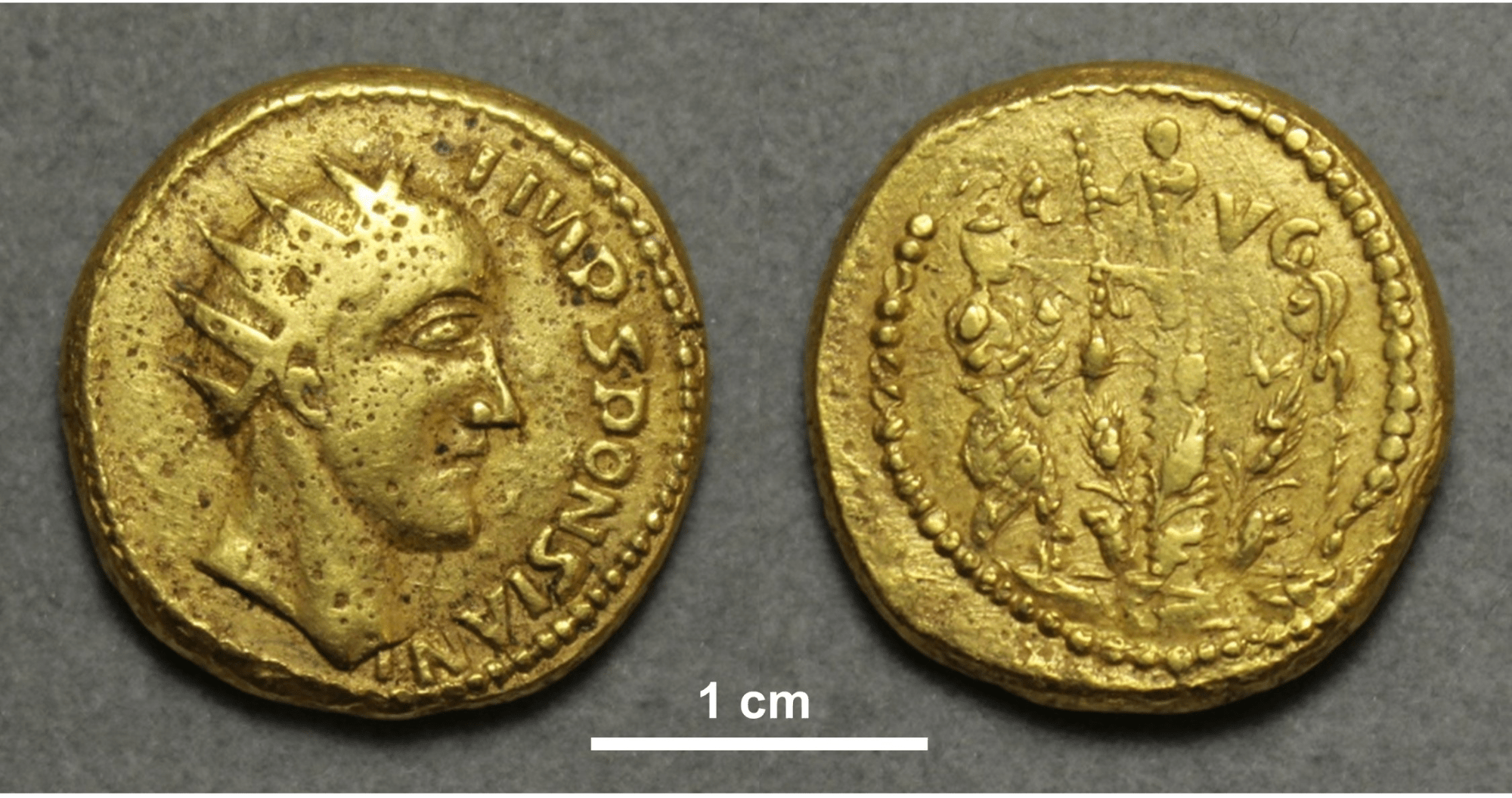

It’s a perfect plot for the long-running PBS series Antiques Roadshow. Several Roman coins first discovered in 1713 were long believed to be forgeries. But now, scientists say they are most likely authentic.
The new analysis is described in a study out this week in the open-access journal PLOS ONE. The study provides evidence that the engraving of the leader on one of the coins was an emperor named Sponsian who was considered a historical usurper of power and ruled in the 260s CE.
[Related: Fake Galileo manuscript suspected to be a 20th-century forgery.]
“Scientific analysis of these ultra-rare coins rescues the emperor Sponsian from obscurity,” Paul N. Pearson of University College, London and the a lead author of the paper said in a statement. “Our evidence suggests he ruled Roman Dacia, an isolated gold mining outpost, at a time when the empire was beset by civil wars and the borderlands were overrun by plundering invaders.”
For much of ancient Roman history, mints made coins that featured portraits of current emperors. A group of these coins was allegedly discovered in Transylvania in 1713. Some of the coins had a portrait labeled with the name “Sponsian,” on them, but no historical records that a Roman emperor with that name existed at the time.
The Transylvanian coins follow the general style of Roman coins from the mid-third century, like chunky lettering and bold portraits with prominent chins, but there are some stylistic differences on the coins and the metals that they were made from. These differences led many experts to dismiss the coins as fakes that were made to sell to collections. Additionally, the name “Sponsian” was not yet known to historians in 1713, according to the study.
Science met ancient history when visible light microscopy, ultra-violet imaging, scanning electron microscopy, and reflection mode Fourier transform infrared (FTIR) spectroscopy were used to investigate whether or not these coins were the real deal. Pearson and colleagues conducted the deeper assessment of the physical characteristics of four of the coins, including the Sponsian coin, with two undoubtedly authentic Roman gold coins as a comparison.
[Related: Researchers found what they believe is a 2,000-year-old map of the stars.]
The analysis showed deep micro-abrasion patterns that are generally associated with coins that were in circulation for a very long period of time, even centuries. The dirt deposits on the coins were also examined, and the team found evidence that after a long circulation, the coins were buried for a while before being unearthed. According to the team, this new evidence of circulation and burial strongly suggests the coins are authentic.
While looking at the historical record alongside the new evidence from the coins, the team suggests that Sponsian was also an army commander in the Roman Province of Dacia during a period of military strife in the 260s CE.
“This has been a really exciting project for The Hunterian,” said Jesper Ericsson, Curator of Numismatics at The Hunterian at the University of Glasgow, in a statement. “Not only do we hope that this encourages further debate about Sponsian as a historical figure, but also the investigation of coins relating to him held in other museums across Europe.”
